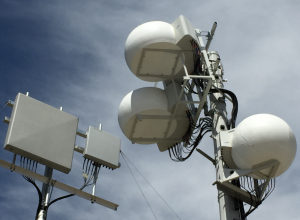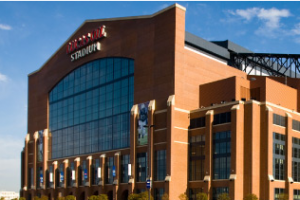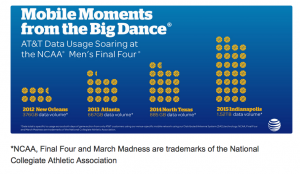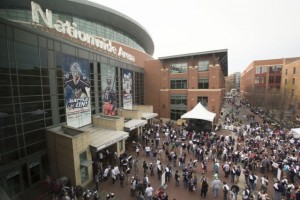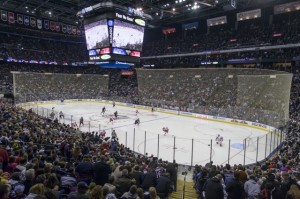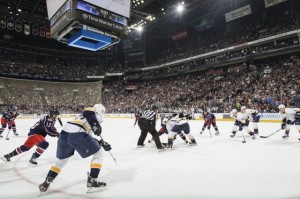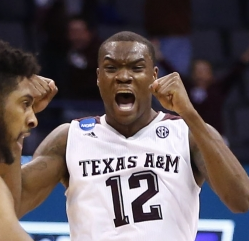 While your bracket was busy getting busted, AT&T said it saw more than 3.6 terabytes of cellular data cross the networks at the eight stadiums hosting the first rounds of the men’s NCAA basketball tournament last weekend.
While your bracket was busy getting busted, AT&T said it saw more than 3.6 terabytes of cellular data cross the networks at the eight stadiums hosting the first rounds of the men’s NCAA basketball tournament last weekend.
In Providence, R.I., at the Dunkin’ Donuts Center, AT&T said it saw 926 GB of cellular data cross its networks there during the first round games, a total perhaps helped by the Yale-Duke game in the second round. Stay tuned for more data updates from NCAA regionals as well as from the Final Four. And any other carriers that want to send their numbers along, please do so!
